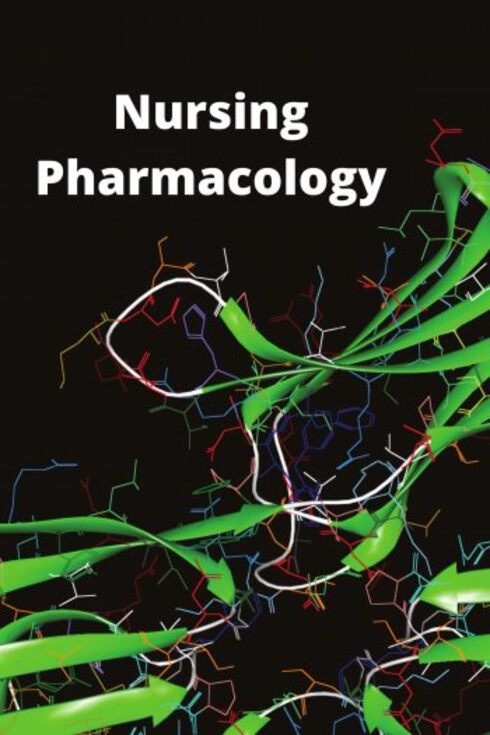What are OER - Open Educational Resources?
Open Educational Resources (OER) are teaching, learning, and research resources that are free of cost and access barriers, and which can be fully used, shared and adapted in the digital environment.
What are OER? Why use OER? Where is OER? How is OER created? Who can help?
OER Resources for Nursing
-
Nursing OER resources from MERLOT projectThe MERLOT collaboration (founded by the University of California system) provides access to curated online learning and support materials and content creation tools, led by an international community of educators, learners and researchers.
-
Open Stax Nursing Textbook CollectionOur nursing textbooks are designed to meet the standard scope and sequence requirements of their respective courses – and are 100% free online. Complete with free resources for educators (like lecture slides, test banks, instructor answer keys, and more), all OpenStax textbooks are fully customizable.
-
Open Textbook Library Nursing collectionThe Open Textbook Network Library is a project of the Center for Open Education at the University of Minnesota.
Please find a sample of Nursing OER textbooks below!
-
Nursing Care at the End of Life by Nursing Care at the End of Life: What Every Clinician Should Know addresses an essential component of the basic educational preparation for the professional registered nurse student. Recent studies show that only one in four nurses feel confident in caring for dying patients and their families and less than 2% of overall content in nursing textbooks are related to end-of-life care. Despite the tremendous growth in palliative and end-of-life care programs across the country, very few nursing education programs provide adequate education on this topic for future nurses. The purpose of this textbook is to provide an indepth look at death and dying in this country and explore the vital role of the nurse in assisting patients and families along the journey towards the end of life. There is an emphasis throughout the book on the simple, yet understated value of effective interpersonal communication between the patient and clinician. The text provides a basic foundation for understanding death and dying, including a brief historical examination of some main conceptual models associated with how patients cope with impending loss. An overview of illness trajectories and models of care, such as hospice and palliative care, are discussed. Lastly, the latest evidence based approaches for pain and symptom management, ethical concerns, cultural considerations, care at the time of death, and bereavement are examined. The goal of this text is to foster the necessary skills for nurses to provide compassionate care to individuals who are nearing the end of life and families who are experiencing the loss of a loved one. Every chapter contains a "What You Should Know" section which highlights and reinforces the main message nurses should know when caring for their patient.
Call Number: Open AccessISBN: 9781942341192Publication Date: 2015-12-14 -
Transitions to Professional Nursing Practice by
Call Number: Open AccessISBN: 9781641760904Publication Date: 2020-06-22 -
 Nursing Pharmacology
by
This open access Nursing Pharmacology textbook is designed for entry-level undergraduate nursing students. It explains basic concepts of pharmacology and describes common medication classes. This book is not intended to be used as a drug reference book, but direct links are provided to DailyMed, which provides trustworthy information about marketed drugs in the United States.
Call Number: Open AccessPublication Date: 2020
Nursing Pharmacology
by
This open access Nursing Pharmacology textbook is designed for entry-level undergraduate nursing students. It explains basic concepts of pharmacology and describes common medication classes. This book is not intended to be used as a drug reference book, but direct links are provided to DailyMed, which provides trustworthy information about marketed drugs in the United States.
Call Number: Open AccessPublication Date: 2020 -
 Literature Reviews for Education and Nursing Graduate Students
by
Literature Reviews for Education and Nursing Graduate Students is an open textbook designed for students in graduate-level nursing and education programs. Its intent is to recognize the significant role the literature review plays in the research process and to prepare students for the work that goes into writing one. Developed for new graduate students and novice researchers just entering into the work of a chosen discipline, each of the eight chapters covers a component of the literature review process. Students will learn how to form a research question, search existing literature, synthesize results and write the review. The book contains examples, checklists, supplementary materials, and additional resources. Literature Reviews for Education and Nursing Graduate Students is written by two librarians with expertise guiding students through research and writing assignments, and is openly licensed.
Call Number: Open AccessPublication Date: 2017
Literature Reviews for Education and Nursing Graduate Students
by
Literature Reviews for Education and Nursing Graduate Students is an open textbook designed for students in graduate-level nursing and education programs. Its intent is to recognize the significant role the literature review plays in the research process and to prepare students for the work that goes into writing one. Developed for new graduate students and novice researchers just entering into the work of a chosen discipline, each of the eight chapters covers a component of the literature review process. Students will learn how to form a research question, search existing literature, synthesize results and write the review. The book contains examples, checklists, supplementary materials, and additional resources. Literature Reviews for Education and Nursing Graduate Students is written by two librarians with expertise guiding students through research and writing assignments, and is openly licensed.
Call Number: Open AccessPublication Date: 2017